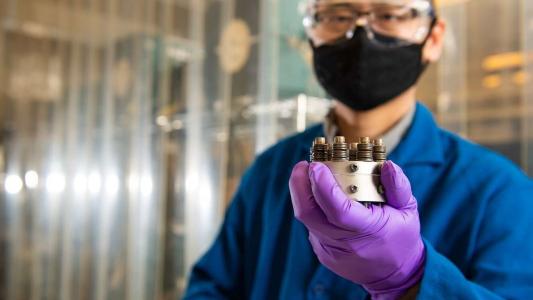The art, tech, and financial worlds were all rattled by the recent rise of non-fungible tokens (NFTs). Despite often being little more than a link to a digital file and a line of code demonstrating ownership, more than $200 million were spent on NFTs in the first three months of 2021 alone.
You could be forgiven for being confused. NFT images of cartoon profile pictures have sold for astronomical sums of money. The images themselves are JPEGs, which anybody can copy with a few clicks. This is true for all NFTs — including the ones that sold for millions — often to the irritation of the people who bought them. Despite that, interest in NFTs continues to grow, with more sales every day and some major industries trying to figure out how to use them.
What is an NFT?
So, given all that, what are NFTs in the first place? How are they used in art? Can NFT art be more than just a picture of a monkey in a hat, and is there any reason to think that the NFT craze is more than just a passing fad?
NFTs can be thought of as units of data stored on a blockchain ledger, which is sort of like a series of transactions that are kept in a database that is distributed all over the internet. Because of the nature of blockchain ledgers, it is very easy to see the entire history of that unit of data, very difficult to improperly change it without getting caught, and comparatively simple to place the NFT for sale on a digital market where it can be bought and sold by those interested in what it represents.
While NFTs behave just like other crypto coins and tokens on a blockchain, they are not identical to each other. NFTs are non-fungible, which means each is unique and cannot be exchanged for another identical unit. While every bitcoin is equal and identical to every other bitcoin, NFTs are completely unique and vary in price. Because of these features, NFTs are often an excellent way to handle digital artwork.
Thanks to NFTs, digital art can be bought and sold online, just like a physical piece of art in a gallery.
This also means that when a person buys an NFT of a painting, they are actually buying a unit of data pointing to a digital image that will prove that they own it. While this may seem silly to some people, notice that many museums have plaques near paintings informing visitors about the philanthropist who owns the artwork on display. This is not an unrelated concept. NFTs are analogous to digital plaques.
As explained by Coinbase VP of Products Sanchan Saxena, this proof is important to many people in the digital art world:
“I can take a photo of (the) Mona Lisa and say ‘this is mine,’ but nobody is going to believe it. Because there is something known as ‘provenance’ or ‘proof of ownership.’ So an NFT — a non-fungible token — is a unique copy, and it’s a contract that says that you own this digital piece of art, and that is very powerful in many, many regards.”
Other benefits of NFTs for artists
Beyond just allowing certain kinds of digital work, such as animation, to be sold and managed in ways that were previously unheard of, there are certain other benefits to the NFT artist. For example, while most artists are paid for the initial sale of a painting and then never see another dime, an NFT can be created such that it provides royalties to the original artist every time it sells. In theory, this means that an artist who makes a well-received work could benefit from it over and over again.
While NFTs have existed since at least May 2014, they only began to enter the public awareness in 2017, helped by the wave of popularity in the NFT-driven game CryptoKitties. While the common conception of NFTs are often limited to JPEGs of monkeys in hats, a considerable amount of NFT art worth considering on its merits has already been created.
One such example is the work of pplpleasr, also known as Emily Yang, an artist who has begun using NFTs to make a profit.
But that’s not all. pplpleasr also has sold artwork to help fund nonprofits that are dedicated to reducing violence against Asian-Americans. To that end, a decentralized autonomous organization (DAO) called PleasrDAO was created to buy a piece created by pplpleasr. The proceeds from the sale have been donated to twenty-four different non-profits.
NFTs beyond the art world
NFTs could be used to keep track of other unique items. Tickets to concerts and sporting events are an especially popular suggestion, as it would be possible to make digital tickets with traceable ownership. Not only might this allow for a better digital ticket experience, but it would also allow for many of the middlemen in ticket sales to be removed from the equation — in addition to the extensive fees they tend to charge. Thinking back to how resales of NFT art can provide royalties to the artists long after they initially sold the piece, resales of tickets to a show could also be a source of revenue for the performers.
In online virtual worlds — including inside games and virtual hangouts — piles of money are being spent on virtual land and real estate. The nature of NFTs, providing evidence of ownership, are an easy way to handle digital transactions and ownership.
Another proposal is to shift digital identity over from our current model (in which an individual has a number of identities on different websites, like Facebook and Twitter, which are largely controlled by those websites) to a decentralized model where digital ID is owned in the form of an NFT by the individual.
Follow @Coinbase_NFT on Twitter to learn more about NFTs and other artists in the space.






